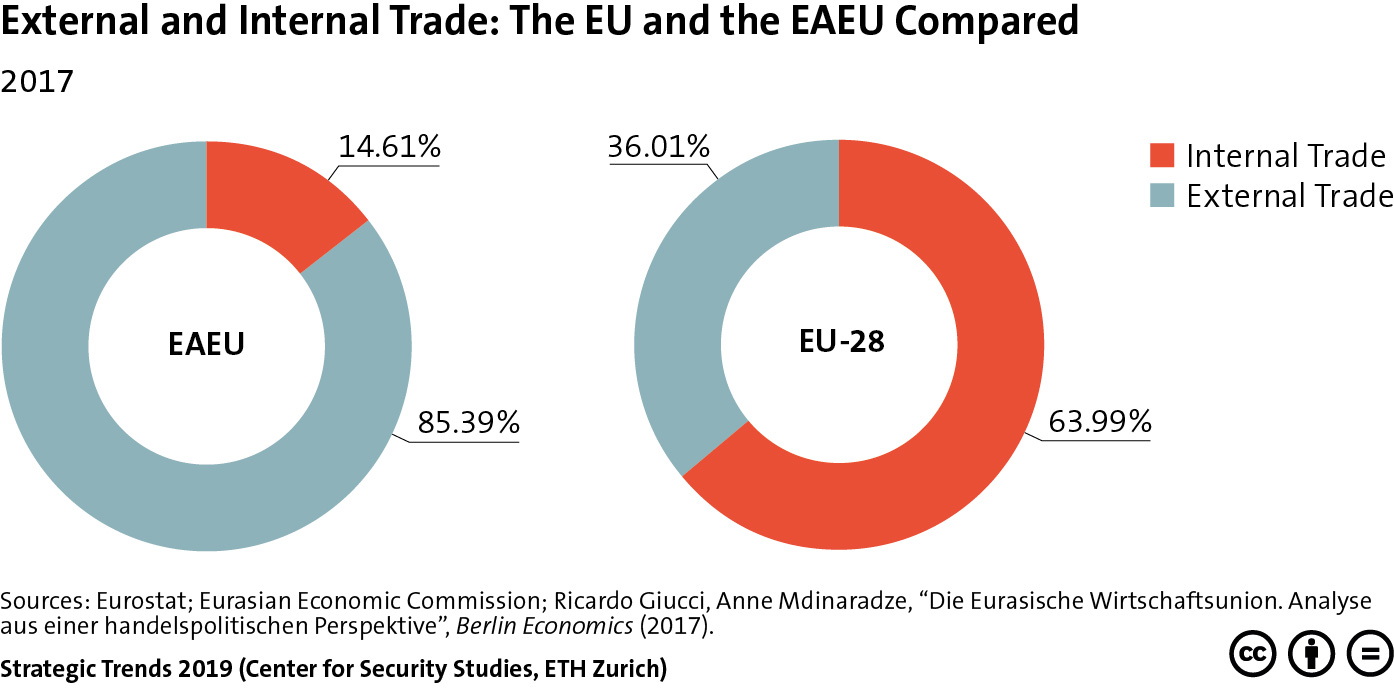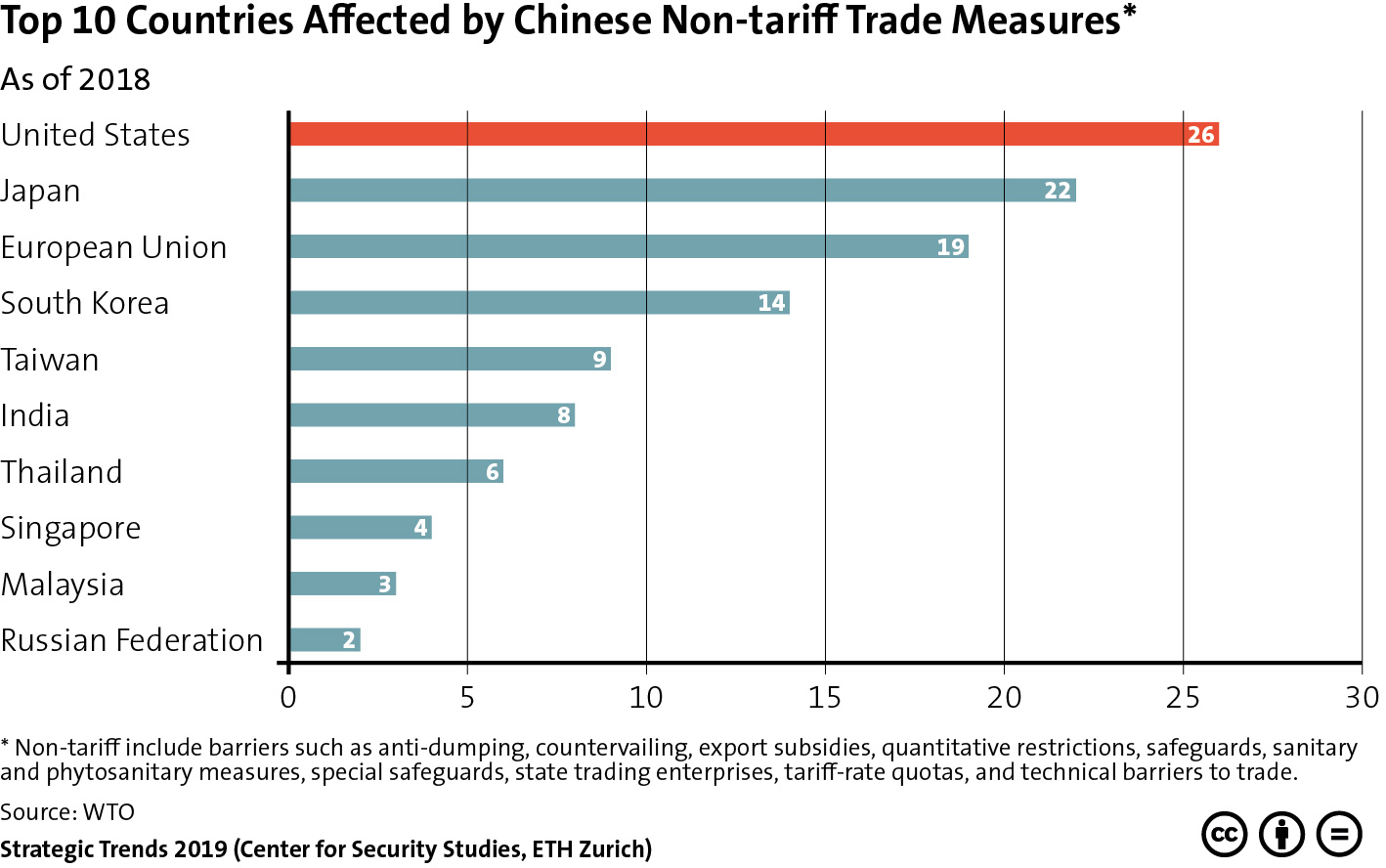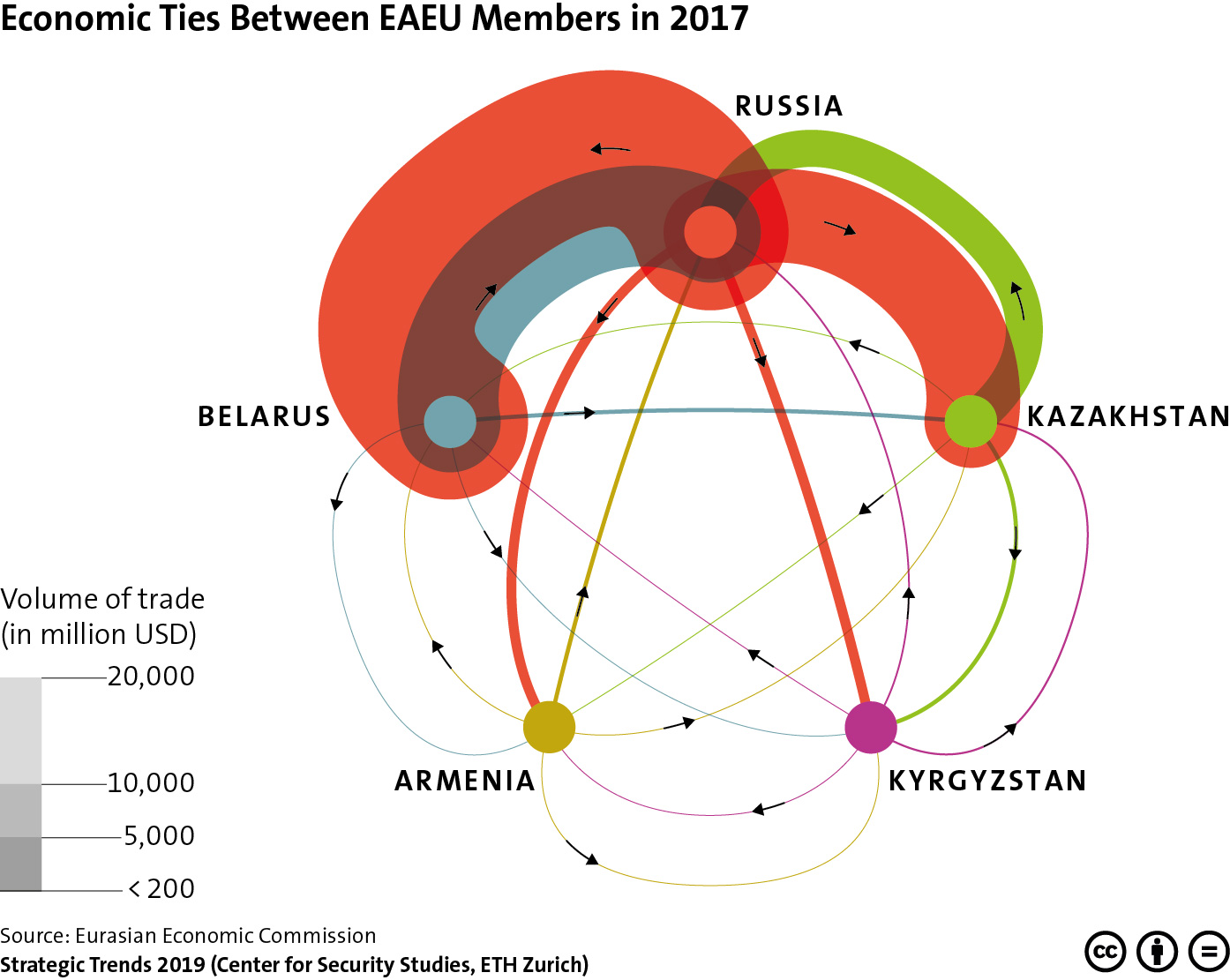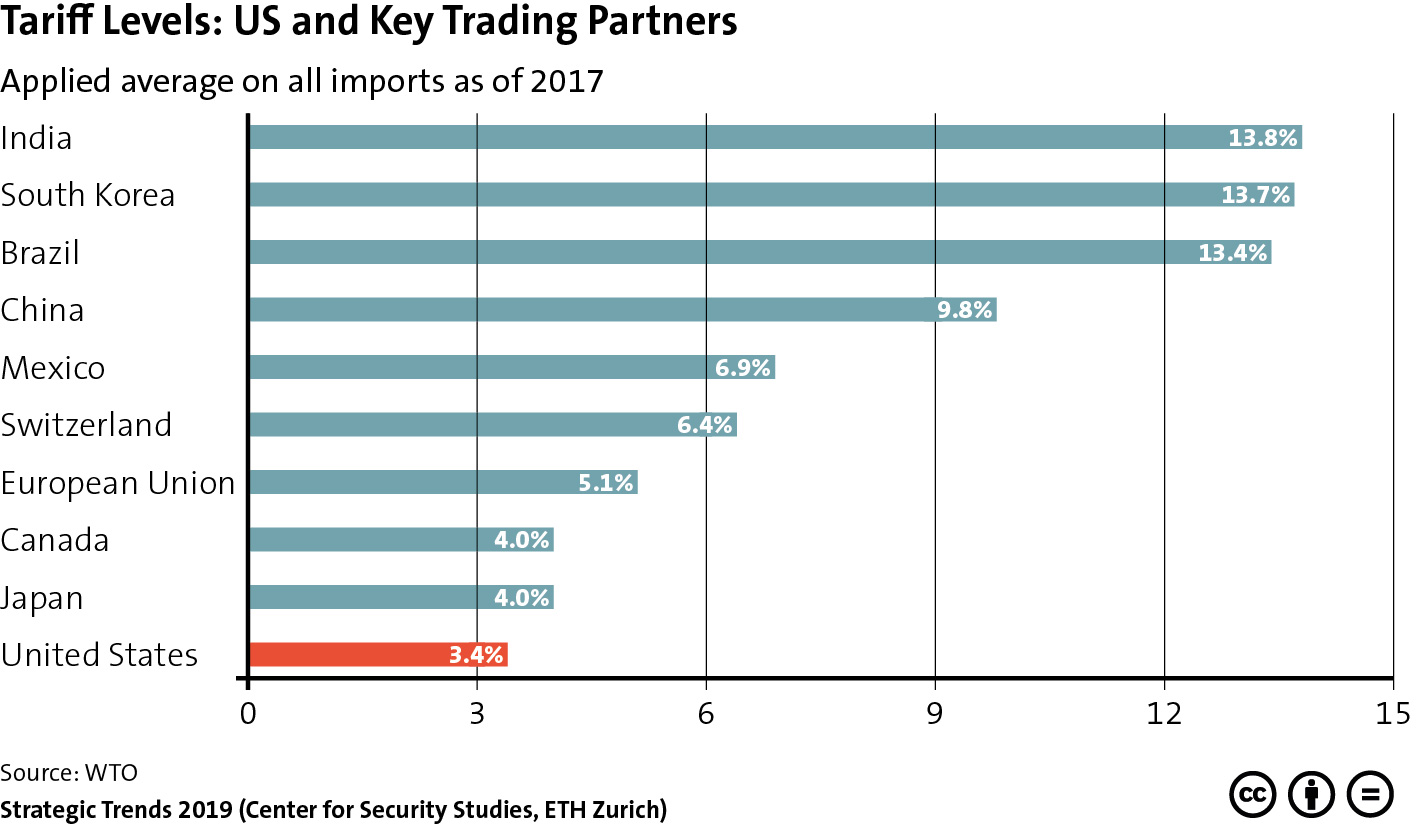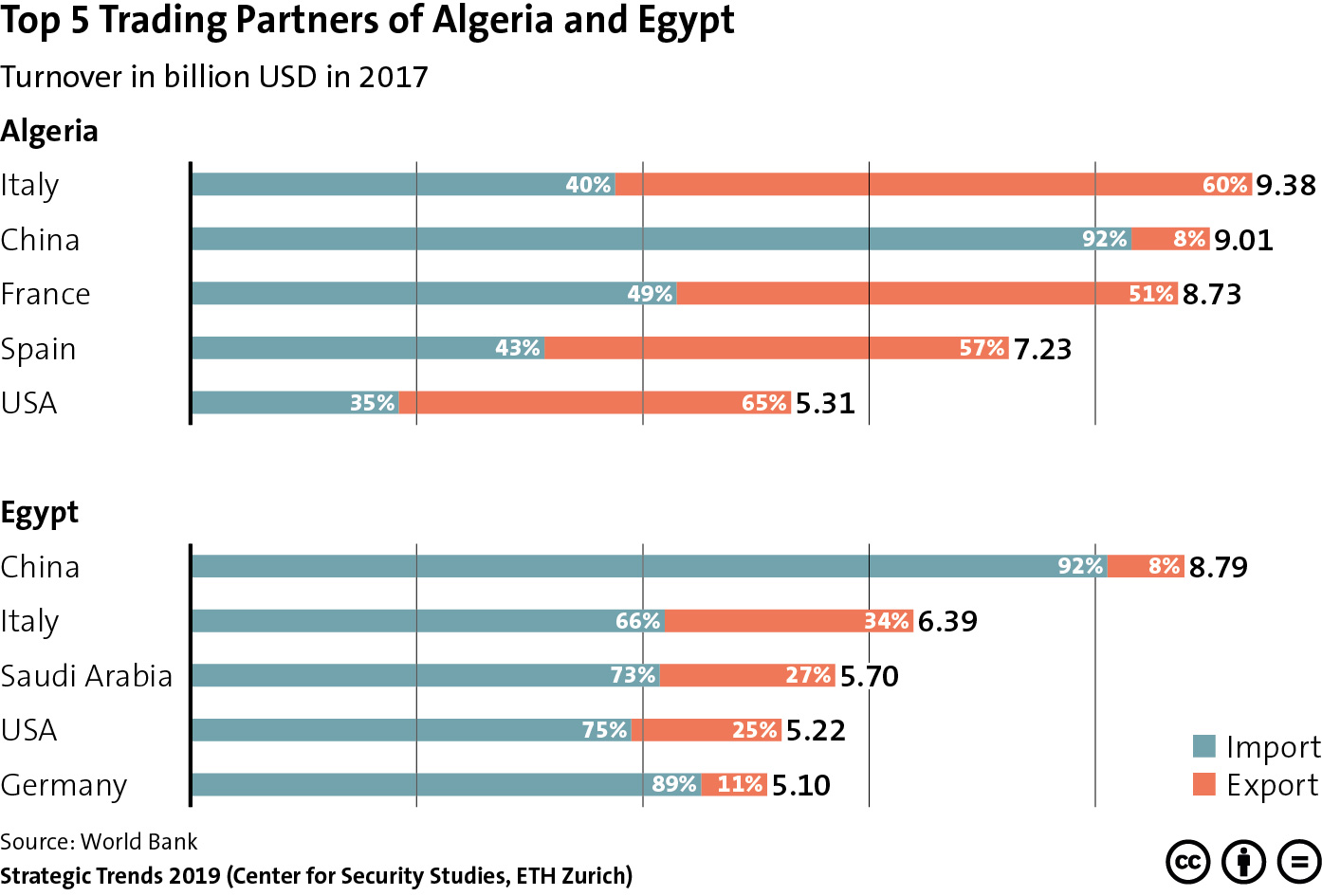
This week’s featured graphic provides an overview of Algeria and Egypt’s top trading partners. Russia’s absence from the top five trading partners list of either country highlights that despite Moscow’s revival of its ties with Cairo and Algiers, it remains overshadowed by other actors in the economic sphere. To find out more about Russia’s strategy in the Middle East and North Africa, read Lisa Watanabe’s chapter for Strategic Trends 2019 here.




